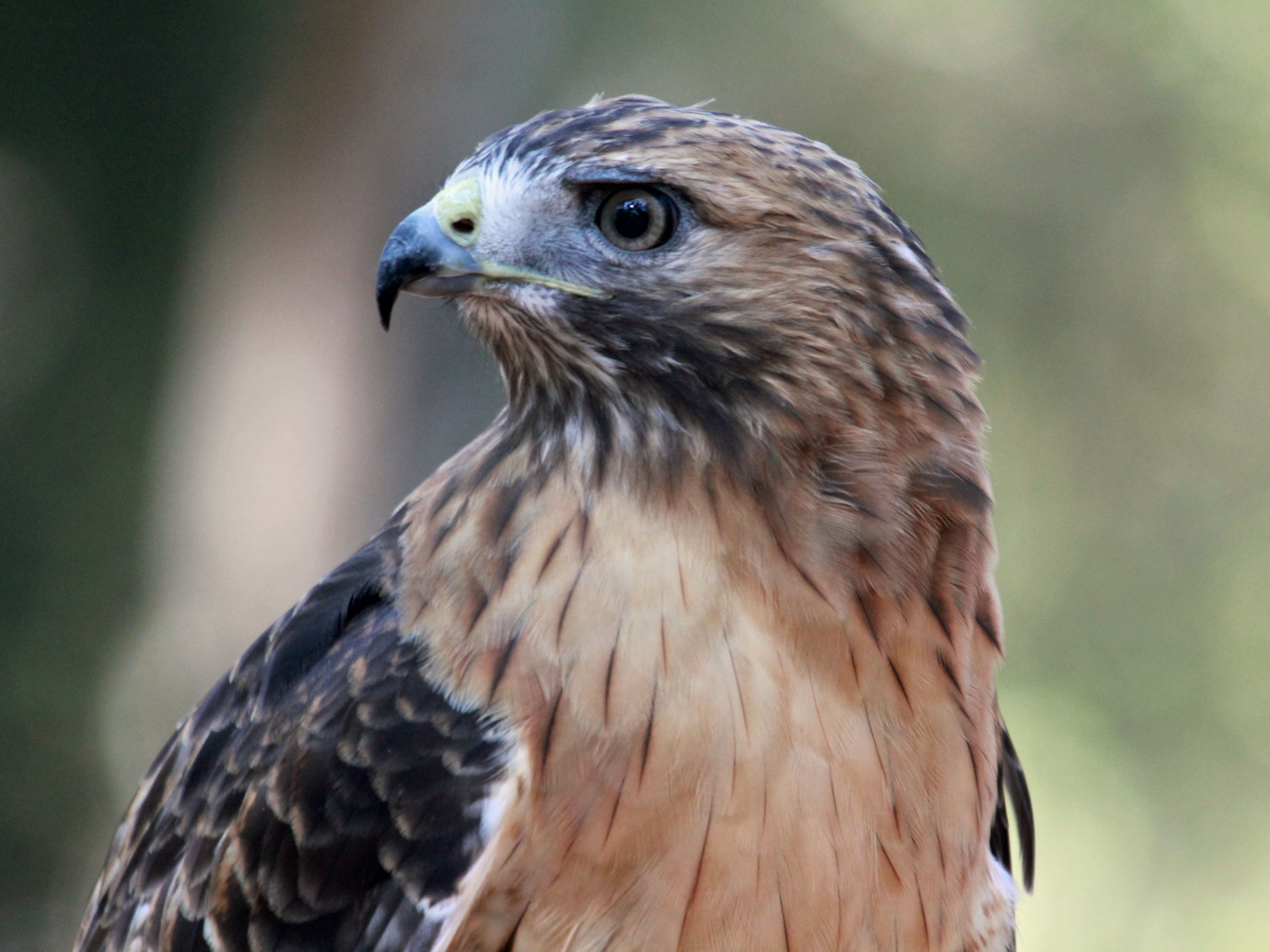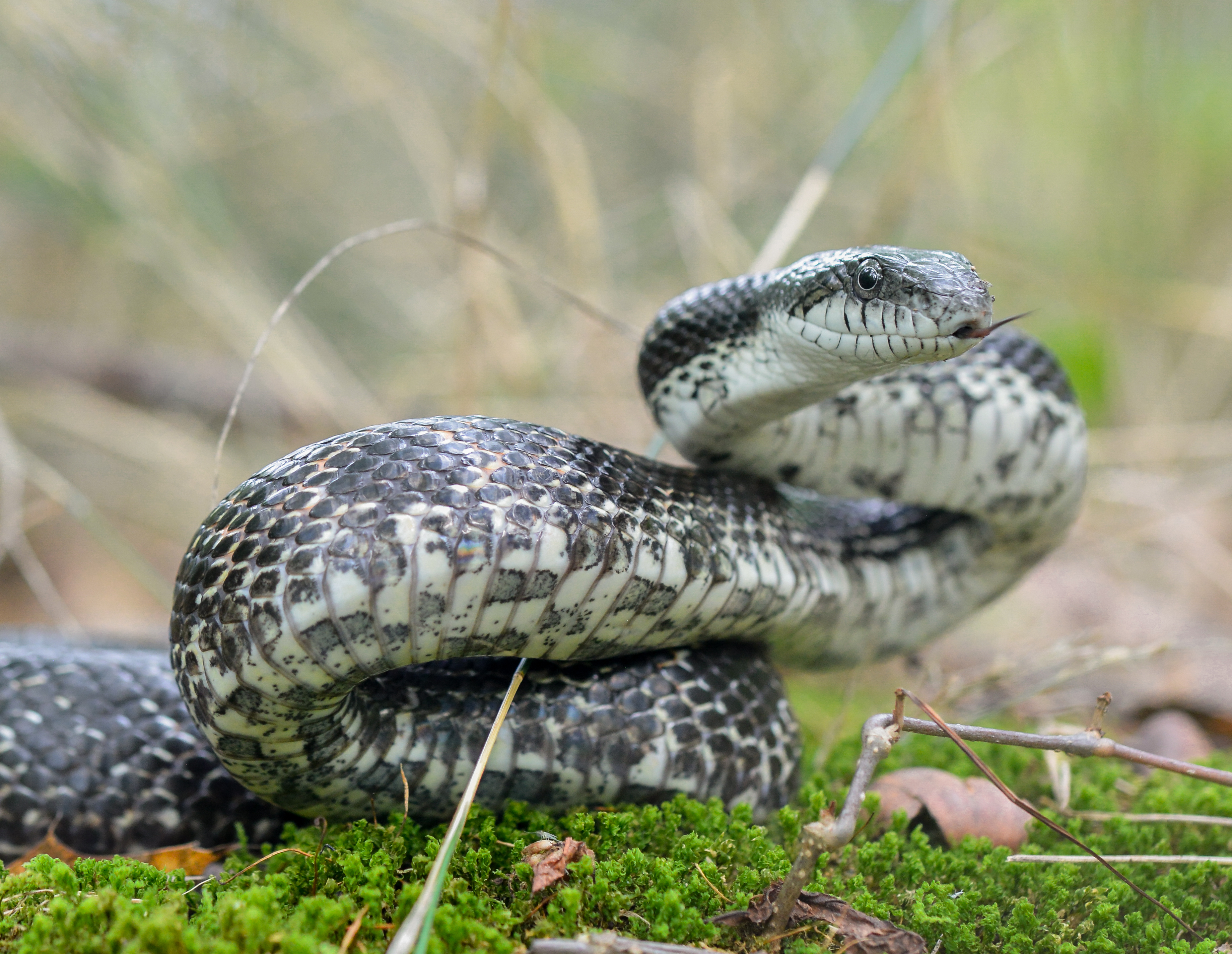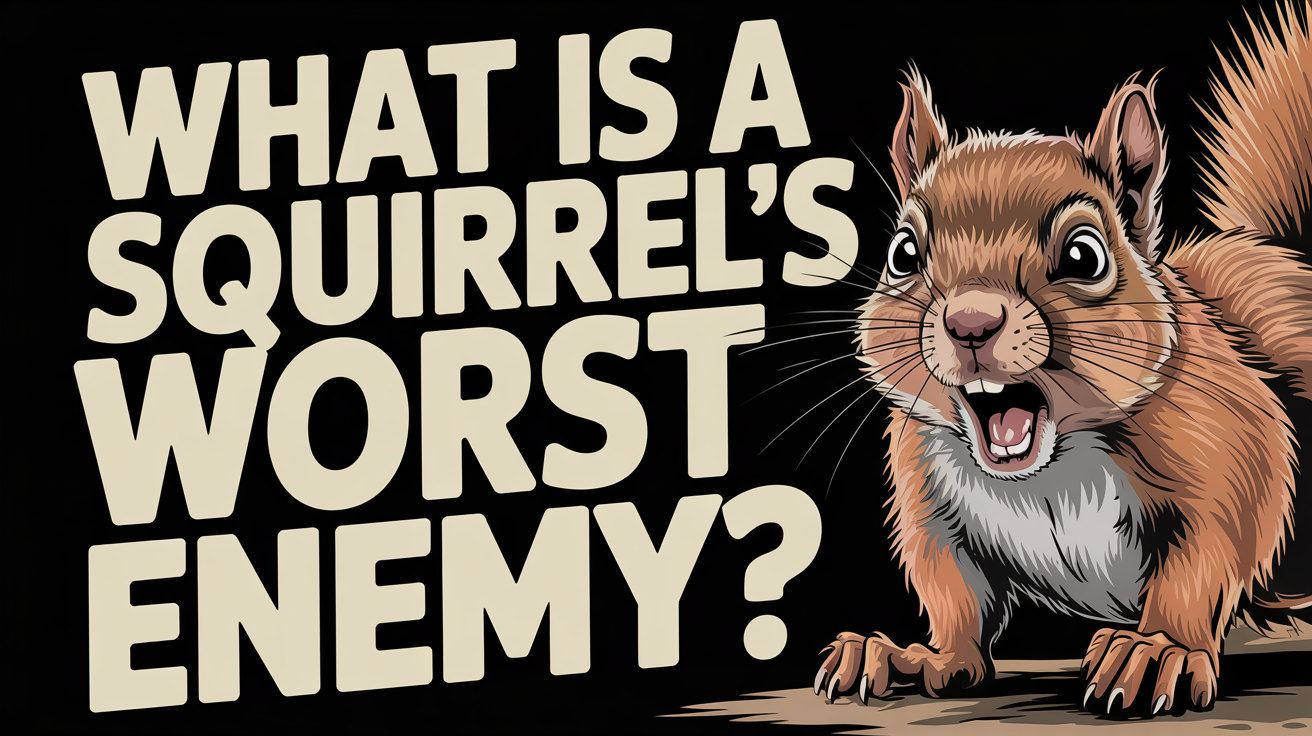“Squirrels may seem like agile survivors, but even they face constant danger from an array of natural predators. From hawks to weasels, these threats keep them on high alert every day.”
Squirrels may seem agile and resourceful, but they have a number of natural enemies that pose significant threats to their survival. From predators like hawks and snakes to environmental challenges such as harsh weather, squirrels are constantly at risk. These natural dangers play a critical role in keeping squirrel populations in balance within ecosystems.
Even domesticated pets like cats and dogs can pose a serious threat to squirrels, especially in urban and suburban environments. If you’ve ever dealt with a squirrel in attic situations, you know how vulnerable these animals can be once they leave their natural habitats. In this article, we’ll explore the most common enemies of squirrels and how these animals defend themselves against them.
Common Predators of Squirrels and How They Threaten Survival

Predatory Birds
Squirrels face a significant threat from predatory birds, which are some of their most formidable enemies in the wild. Raptors such as hawks, owls, and eagles have the advantage of being able to strike from above with incredible speed and precision. Hawks, in particular, are often seen circling over open areas, scanning for small prey like squirrels.
With their sharp talons and powerful beaks, hawks can snatch a squirrel right off the ground or even mid-climb as they dart between trees. Eagles, although larger and less frequent in urban areas, can still pose a deadly risk to squirrels in rural or forested regions where both animals coexist.
Owls, especially nocturnal species, add an additional layer of danger. Squirrels are typically diurnal (active during the day), but foraging for food in the early morning or late evening puts them at risk of encountering these silent hunters.
Owls are experts at gliding quietly through the night, relying on their keen eyesight and acute hearing to detect even the slightest movement. For squirrels, the presence of predatory birds means constantly staying alert, relying on their speed and agility to escape, or finding shelter in dense trees where they can hopefully stay out of sight.

Foxes
Foxes are another formidable enemy that squirrels must be wary of, especially when on the ground. These cunning predators have keen senses of sight, smell, and hearing, making them excellent hunters. Foxes are quick, agile, and able to blend into their environment, allowing them to sneak up on unsuspecting squirrels.
Since squirrels spend a lot of time foraging on the ground for food such as nuts and seeds, they can become easy targets if they aren’t paying close attention. Foxes will take advantage of any moment when a squirrel is distracted, making a sudden and swift chase in hopes of capturing the small animal.
While squirrels are fast and excellent climbers, they must act quickly to escape the clutches of a fox. A squirrel’s best defense against a fox is to dart up a tree or leap from branch to branch, where the fox cannot follow.
Foxes rely heavily on their stealth and timing to catch squirrels, but they are persistent and patient predators. If a squirrel is caught off guard or in an open area far from the safety of trees, the chase can end in the fox’s favor.

Coyotes
Coyotes pose yet another significant threat to squirrels, particularly in areas where these adaptable predators are common. Known for their versatility in both rural and urban settings, coyotes are opportunistic hunters that take advantage of whatever prey is available, including squirrels.
Coyotes are fast runners and have excellent tracking abilities, making them a serious danger for squirrels on the ground. Much like foxes, they rely on their speed and stealth to close the gap between themselves and their prey, often launching surprise attacks to catch a squirrel off guard.
For squirrels, a close encounter with a coyote can be a life-or-death race to safety. Coyotes typically patrol open areas like fields, parks, or even suburban neighborhoods, where squirrels are likely to forage for food. When a squirrel notices a coyote nearby, it must immediately flee to higher ground, often darting toward the nearest tree to escape.
The squirrel’s ability to zigzag and change direction rapidly can sometimes help it evade capture, but in more open spaces, coyotes have the upper hand. This constant vigilance and quick response are crucial to a squirrel’s survival in areas inhabited by coyotes.

Snakes
Snakes present a unique and often hidden danger for squirrels, particularly in areas where tree-dwelling or ground-dwelling snakes are common. Unlike other predators that rely on speed or aerial attacks, snakes use stealth and ambush tactics to catch their prey.
Tree-dwelling snakes, such as rat snakes, pose a threat to squirrels while they’re in their nests or foraging in trees. These snakes can slither quietly through the branches, moving toward an unsuspecting squirrel without being noticed until it’s too late. Ground-dwelling snakes, like rattlesnakes or vipers, often lie in wait near food sources or squirrel nests, ready to strike with deadly precision.
For squirrels, avoiding snakes requires constant awareness of their surroundings. While squirrels are known for their quick reflexes and sharp senses, a snake’s ability to blend into its environment makes them particularly dangerous. Squirrels often rely on their agility to escape, quickly darting up trees or out of a snake’s reach if they sense danger.
However, young squirrels and those caught off guard are particularly vulnerable, as they may not react quickly enough to evade a snake’s strike. Snakes’ stealth and ability to remain hidden until the moment of attack make them one of the more elusive, but equally deadly, enemies for squirrels.

Domestic Cats
While not typically thought of as major wildlife predators, domestic cats can be a serious threat to squirrels, especially in suburban or urban environments. Outdoor cats, whether stray or pets allowed to roam freely, often hunt small animals out of instinct. Squirrels, with their quick movements and small size, are an enticing target for these feline hunters.
Cats are natural stalkers, quietly sneaking up on their prey before launching a swift and often deadly attack. For squirrels, cats are a constant risk when foraging near homes, gardens, or parks where cats are frequently present.
Even though squirrels are fast and agile, a determined cat can be a relentless predator. If a cat manages to corner a squirrel or catch it by surprise, the squirrel’s options for escape become limited. However, squirrels usually try to flee up trees or into tight spaces where cats can’t follow.
Still, the presence of outdoor cats in a squirrel’s environment forces these small rodents to stay on high alert, making urban areas a surprisingly dangerous place for them. Domestic cats, despite their seemingly harmless appearance, are skilled hunters and a real threat to a squirrel’s daily survival.

Humans
Humans, while not predators in the traditional sense, can be one of the biggest threats to squirrels in both rural and urban environments. Cars, for example, are a major hazard for squirrels as they frequently dart across roads while foraging or moving between trees. Squirrels often misjudge the speed of vehicles, leading to tragic outcomes.
Additionally, human activities like deforestation and urban expansion destroy squirrel habitats, leaving them with fewer places to nest, forage, and seek shelter from predators. As humans encroach on natural spaces, squirrels are forced into smaller, fragmented habitats, making it harder for them to survive.
Furthermore, humans sometimes actively set traps or use repellents to deter squirrels from invading homes, gardens, or attics. While this is often done to protect property, it can pose significant dangers to squirrels. Squirrels caught in traps or exposed to harmful substances can suffer injury or death.
Even well-meaning actions like feeding squirrels in urban areas can put them at risk by making them more dependent on humans and exposing them to other dangers, such as predators or cars. In many ways, human influence has become an indirect but powerful enemy to squirrels, impacting their survival in multiple facets of life.

Weasels
Weasels are small, agile, and incredibly efficient predators that pose a significant threat to squirrels, especially in forested areas. Despite their small size, weasels are known for their ferocity and persistence when hunting.
They are skilled climbers, which allows them to chase squirrels into trees, and their slender bodies enable them to squeeze into tight spaces, such as nests or burrows, where squirrels may seek refuge. Weasels are relentless hunters, often pursuing their prey with incredible speed and determination, making it difficult for squirrels to escape.
A squirrel’s typical defense mechanism of climbing trees or hiding in crevices may not be enough to evade a determined weasel. These predators can follow them almost anywhere, increasing the likelihood of a successful hunt. Weasels are particularly dangerous to young squirrels or those that are not as experienced in evading predators.
A squirrel’s only real defense against a weasel is its speed and agility, but even then, it’s a tough battle when up against such a nimble and cunning hunter. For squirrels, encountering a weasel is one of the most dangerous situations they can face in the wild.

Raccoons
Raccoons, while not typically considered active hunters of squirrels, can still pose a significant threat, particularly to young or vulnerable squirrels. Opportunistic by nature, raccoons are known to raid squirrel nests (also called dreys) in search of eggs, baby squirrels, or even leftover food stored by squirrels for later. While they may not directly hunt adult squirrels as their primary prey, raccoons are skilled climbers and can easily invade nests located in trees, making them a risk during nighttime or when squirrels are resting.
Raccoons are most dangerous to squirrels during nesting season when baby squirrels are most vulnerable. Adult squirrels may attempt to defend their nests, but raccoons are larger and stronger, often overpowering them to reach the babies or food within.
Additionally, raccoons are scavengers, and any time a squirrel stores food in its nest or nearby areas, there’s a chance that a raccoon could come along and steal it, leaving the squirrel without the resources it needs to survive. Though they may not actively stalk squirrels like other predators, raccoons’ opportunistic nature and ability to raid nests make them a considerable enemy in a squirrel’s environment.

Bobcats
Bobcats are stealthy, powerful predators that can be a serious threat to squirrels, especially in wooded or rural areas. These wild cats are known for their excellent stalking abilities, often using the cover of bushes or tall grass to creep up on their prey before launching a quick, precise attack.
With their sharp claws and strong, muscular build, bobcats can easily overpower small animals like squirrels. Since bobcats are highly adaptable and able to live in a range of environments, they pose a constant threat to squirrels that share the same territory.
For squirrels, avoiding a bobcat encounter can be particularly challenging because of the bobcat’s stealthy hunting style. Often, squirrels won’t realize a bobcat is nearby until it’s too late, as bobcats rely on ambush tactics rather than prolonged chases.
Bobcats are also excellent climbers, which puts squirrels at an even greater disadvantage when trying to escape by climbing trees. Although squirrels are fast and agile, a bobcat’s strength, speed, and silent approach make it one of the more dangerous enemies that squirrels must contend with in the wild.

Martens
Martens are small but fierce predators, particularly dangerous to squirrels due to their agility and expert climbing skills. These members of the weasel family are highly adept at navigating trees, making them a direct threat to squirrels that rely on their tree-climbing abilities for safety.
Martens have slender bodies, allowing them to chase squirrels through tight spaces in trees or branches, and their sharp claws make it easy for them to grip and climb at great speeds. In forested regions where both martens and squirrels reside, these predators can be a constant source of danger.
Martens are especially dangerous because they can infiltrate the very places squirrels feel safest, like their nests or tree hollows. Their ability to maneuver through dense foliage and leap from branch to branch gives them an advantage in catching squirrels off guard.
While squirrels are known for their quick reflexes and agility, martens’ persistence and dexterity make them formidable foes. For young or inexperienced squirrels, encounters with martens can quickly turn deadly, as these predators are relentless once they’ve set their sights on a target. Squirrels must stay alert and rely on their speed to outmaneuver these skilled hunters.
Protect Your Property from Wildlife with AAAC Wildlife Removal
If you’re facing problems with squirrels or other wildlife around your home, it’s important to address the situation before it escalates. At AAAC Wildlife Removal, we specialize in humane and effective wildlife management.
Whether you’re dealing with predators that threaten local wildlife or need help with squirrels invading your attic, our expert team is ready to help. Contact us today to schedule an inspection and take the first step toward protecting your home and preserving local wildlife.
Conclusion
Squirrels may seem like carefree creatures, but their daily lives are filled with constant threats from a variety of predators. From the skies, they must watch for predatory birds like hawks and owls, while on the ground, they face the dangers of foxes, coyotes, and even domestic cats. Stealthy hunters like snakes and bobcats can strike from both land and tree, while opportunistic predators such as raccoons and martens can raid nests or catch them off guard.
At AAAC Wildlife Removal, we understand the delicate balance of nature and the importance of protecting wildlife in a way that ensures safety for both animals and humans. If you ever find yourself dealing with nuisance wildlife, such as squirrels or their predators, it’s always best to seek professional help.
We’re here to safely and humanely manage wildlife issues while preserving the natural ecosystem. By taking steps to control predator populations or remove unwanted wildlife from your property, you can help maintain the balance and ensure that local species, like squirrels, have a chance to thrive.




